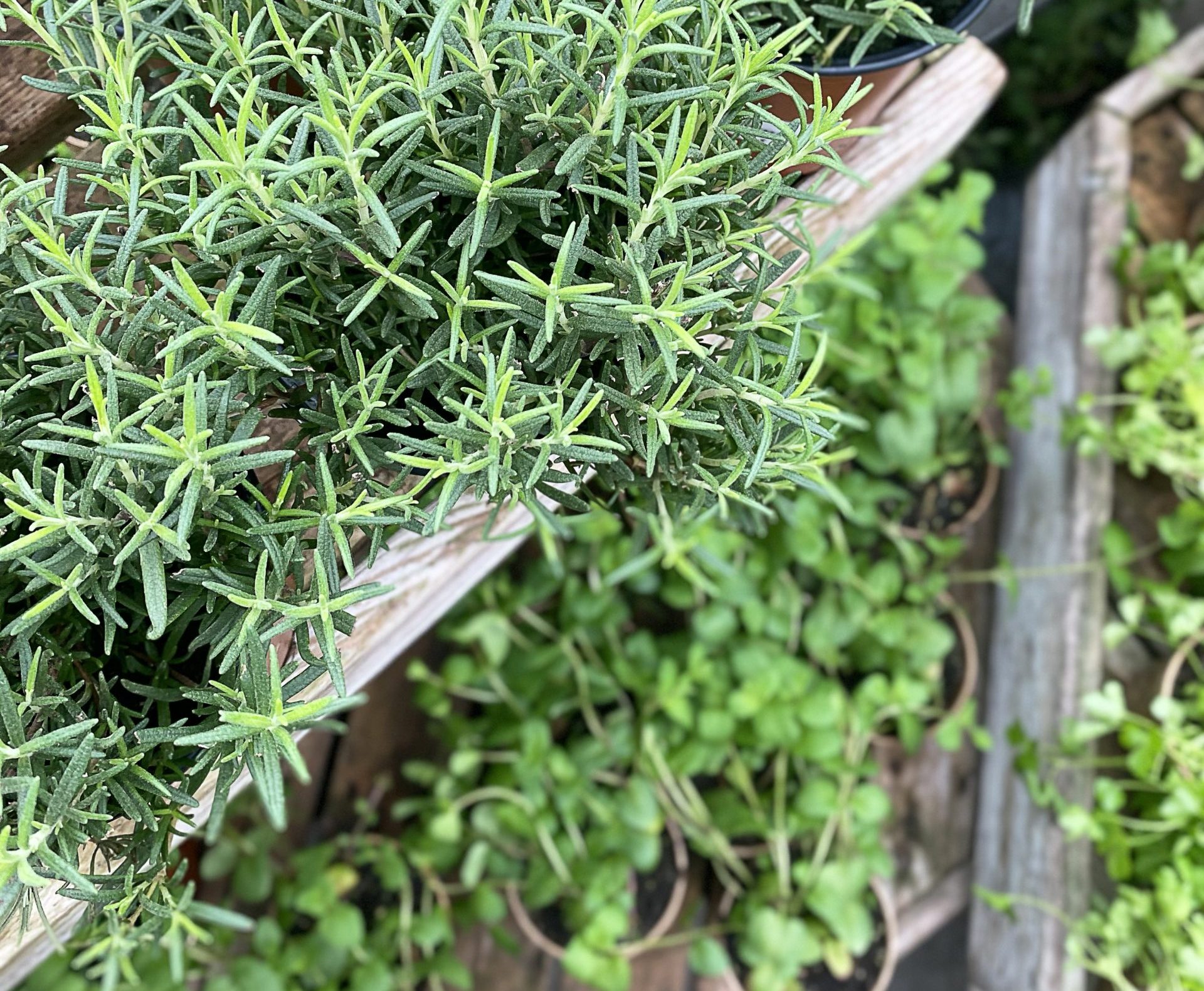Gardening With Herbs
Think of herbs a little like flowers… They can be annuals, biennials or perennials.
Annuals: borage, anise, dill, basil, coriander, marigolds
Biennial: caraway, parsley, artemisia argentia
Perennial: lavender, coneflower (Echinacea), artemisia, mints, lovage, thyme, chives, fennel, sage, bee balm
Tips For Working With Herbs

Sun: Choose a sunny site with 6 – 8 hours of direct sun
Soil: Herbs prefer well-drained soil. If your soil is clay or heavier loam, consider building raised beds to improve drainage. Most herbs prefer a pH between 6.5 – 7.0
Food: Fertilizing is minimum for herbs. Too much fertilizer can produce excessive foliage with poor flavor.
Herbs can be planted in their own bed – a kitchen garden – or can be incorporated into perennial gardens. They can also be used in pots, window boxes, ‘wall’ gardens and in hanging ‘bags’.
Some herbs can protect ornamentals against insect damage. i.e., chives, marigolds and geraniums around roses.
Fast spreading herbs can be contained by sinking them in pots or surrounding them with landscape edging. Mints, Bee Balm, some Artemisia
Herbs can be used for cooking, medicinal purposes, insect and animal deterrents. For example, blue-leaved Rue is disliked by cats, as are grapefruit and orange rinds red pepper and Cayenne. A terrific web site for herbal remedies is www.herbsguide.net.
Some great ornamental herbs: Agastache, Ornamental Oregano (‘Kent Beauty’), Catmint (Nepeta), Bee Balm, Cardoon.

When designing with herbs, consider…
Flowers – colors, bloom time (chives pictured)
Foliage color and leaf shape (i.e., tricolor sage, purple basil, golden oregano)
Texture (i.e., lamb’s ear, salvia argentia)
Fragrant foliage – herbs positioned so they can be brushed to release
Oils or to allow a leaf to be picked or pinched
Printable version of Herb Gardening Tips

